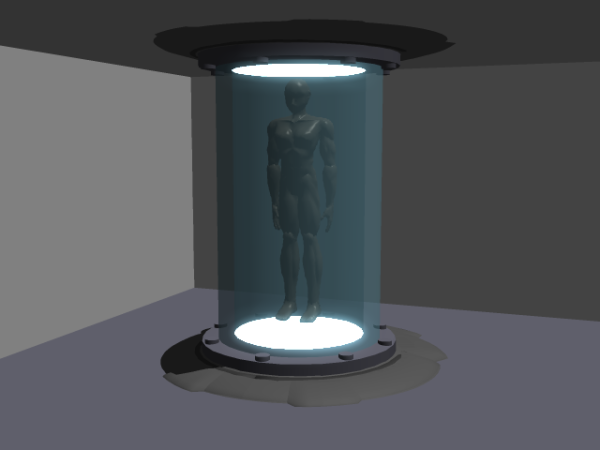Sidebar
Table of Contents
CSW-C3-C2 Ghost Chamber
Developed in YE 42, the Ghost Chamber allows its occupant, typically a member of the Ghost occupation, to comfortably remain in a comatose-like state for days at a time while they possess a ship.
Developed by Conclave Ship Works for Conclave Aerospace and Fleet Forces.
| Designer: | Conclave Ship Works, Noval Heavy Industries |
| Nomenclature: | CSW-C3-C2 |
| Manufacturer: | Conclave Ship Works |
| Fielded by: | New Dusk Conclave |
History
As development on ships equipped with an Anima System progressed, a simple question presented itself - Where do you put someone who's going into a coma-like state for days at a time? A simple chair becomes uncomfortable after a few hours and provides little protection should the ship be hit by powerful kinetic attacks or lose gravity control. Adding straps to a chair was suggested, but did little to handle the discomfort.
The Ghost Chamber was the solution. It is essentially a glass tube equipped with life pod components, an upgraded Anima System, and an Orchestra. Research and fabrication of the first prototype took less than an afternoon.
Function and Design
The Ghost Chamber is an Anima System equipped cylinder roughly 3 meters in height and 1.5 meters in diameter. An Orchestra unit beneath the Chamber's floor is used to levitate the chamber's occupant to the center of the chamber.
A “Ghost” can comfortably float within the chamber for days at a time, provided they do not need sustenance. The Ghost Chamber provides a highly secure, authentication-driven connection to the ship it is connected to. The data throughput of the attached Anima System is significantly higher than the default models, allowing the occupant extensive access to information about the ship's status and unparalleled control over its systems.
For users without a Geist, a headband can be lowered from the ceiling of the Geist that provides Anima System connectivity.
An Operator can greatly enhance their processing abilities by running additional sub-processes on the chamber's hardware. These sub-processes are fully containerized1) and cannot do harm to the Operator should the chamber be compromised.
A speaker system allows the chamber's occupant to communicate via Geist or similar interface with those outside the chamber.
The chamber has a separate life support system from the rest of the ship. In the event of an emergency, it can fully seal itself and be used as an escape pod. Panels on the floor can be opened to reveal rations, water, and other necessary supplies. An independent backup power supply can keep the chamber active for up to a month.
Appearance
When not in use, the Ghost Chamber remains collapsed within the floor. While collapsed, it looks like a disk with a thick ring around its perimeter.
When activated, the chamber raises up from the floor around the occupant. Its walls are made of thick Transparent Durandium. A soft glow fills the chamber as the occupant is lifted off of the ground and held in suspension.
Ghost Chambers are typically placed towards the rear of the ship's bridge.
Availability
Not available for retail sale. Can be used in any Conclave Aerospace and Fleet Forces produced vessel.
OOC Notes
Whisper created this article on 2020/11/09 14:40.
This is similar to the interface chamber from Outlaw Star, but you don't have to get naked to use it.
| Products & Items Database | |
|---|---|
| Product Categories | electronics, subsystems |
| Product Name | Ghost Chamber |
| Nomenclature | CSW-C3-C2 |
| Manufacturer | Conclave Ship Works |
Page Tools
Terms of Service - Privacy Policy

